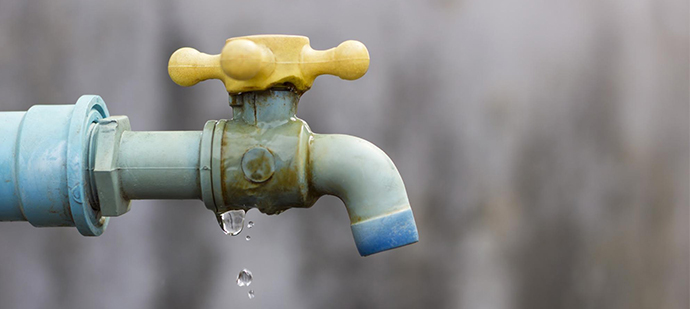Just how to Examine If Your Residence Has a Hidden Leak
Just how to Examine If Your Residence Has a Hidden Leak
Blog Article
Every person maintains their own unique assumption involving Finding hidden leaks.

Early discovery of dripping water lines can mitigate a prospective disaster. Some tiny water leaks may not be noticeable.
1. Analyze the Water Meter
Examining it is a proven way that assists you discover leaks. If it relocates, that indicates a fast-moving leakage. This means you might have a sluggish leak that might also be underground.
2. Check Water Intake
Analyze your water bills as well as track your water intake. As the one paying it, you must observe if there are any kind of disparities. If you find sudden changes, regardless of your usage coinciding, it implies that you have leaks in your plumbing system. Keep in mind, your water expense ought to fall under the very same array monthly. An unexpected spike in your costs suggests a fast-moving leak.
At the same time, a stable boost each month, despite having the exact same behaviors, reveals you have a slow-moving leak that's likewise slowly intensifying. Call a plumber to extensively inspect your residential property, particularly if you really feel a cozy location on your flooring with piping beneath.
3. Do a Food Coloring Examination
When it comes to water intake, 30% comes from bathrooms. If the shade somehow infiltrates your dish throughout that time without flushing, there's a leakage in between the container as well as bowl.
4. Asses Outside Lines
Do not forget to check your exterior water lines also. Test faucets by connecting a garden pipe. Needs to water seep out of the connection, you have a loose rubber gasket. Replace this and also make sure all links are tight. It will assist obtain it expertly checked out and preserved every year if you have actually obtained a lawn sprinkler system. One little leak can squander tons of water as well as increase your water bill.
5. Examine the scenario and also inspect
House owners should make it a habit to examine under the sink counters as well as also inside closets for any type of bad odor or mold and mildew development. These 2 warnings suggest a leakage so timely focus is called for. Doing routine examinations, even bi-annually, can conserve you from a major problem.
Check for stainings as well as weakening as most pipes as well as devices have a life span. If you think dripping water lines in your plumbing system, don't wait for it to intensify.
Early discovery of dripping water lines can alleviate a potential catastrophe. Some tiny water leaks might not be noticeable. Checking it is a proven method that helps you discover leaks. One tiny leak can waste tons of water as well as spike your water expense.
If you presume dripping water lines in your plumbing system, do not wait for it to intensify.
The Dangers of Undetected Water Leaks
Mold
One of the most common results of undetected water leaks in your home is mold. Under the right conditions, mold can begin to grow and spread in just a day or two.
Moisture from water leaks combined with humidity and lack of ventilation allow mold spores to germinate and start spreading.
And while household mold doesn’t carry the same health risks as substances like asbestos, they can cause allergic reactions in people sensitive to them or with asthma.
Structural Damage
When water leaks occur in places we can’t see — above the ceiling, behind walls or beneath floors — they often have time to do some serious damage before making themselves known.
You might notice cracks or bubbles appear in your walls or a slow drip or water from the ceiling.
These are signs of water leaks and buildups in the structure of your home. If you don’t jump on these problems soon enough, the wood frame that supports your house could start rotting, leading to costly repairs and increasing the risk of disasters like ceiling or wall collapses.
Water Waste
According to the Alliance for Water Efficiency, the average home can lose anywhere from 2,000 to 20,000 gallons of water per year due to leaks.
High numbers like that might make you imagine a burst pipe spewing out water. But believe it or not, even a small, constant drip from a kitchen sink could add up to over a thousand gallons of wasted water in a single year.
And if you live in a place where you pay for every gallon of water you use, that adds up to a lot of dollars down the drain. So we understand leaks are bad. Let’s take a look at some of the common (and not-so- common) water leaks you might find around your home.
Flush Valve Flapper
The flush valve flapper is a rubber flap that sits above the flush valve at the bottom of the tank. It’s attached to the flusher with a chain. Over time, it can get worn out and lose its seal, causing an endless flow of water into the toilet bowl.
These leaks are hard to detect since they’re usually silent, but there’s a little insider trick you can use with just a little dye or food coloring:
Put a few drops in the toilet tank. Check the water in your toilet bowl 15 minutes later. If any of the color made it into the toilet bowl, you’ll know what the culprit is.
Fill Valve
The fill valve is what replenishes your toilet’s tank water after you flush. If you’ve ever looked inside your toilet tank and seen water gushing out of an upright plastic valve, that’s a faulty fill valve.
https://meetflo.com/blogs/flo/how-to-find-and-repair-water-leaks-a-comprehensive-guide

As a serious reader on Hacks to detect leaks, I was thinking sharing that chunk was important. Appreciated our entry? Please share it. Help others find it. Thanks a lot for your time spent reading it.
Report this page